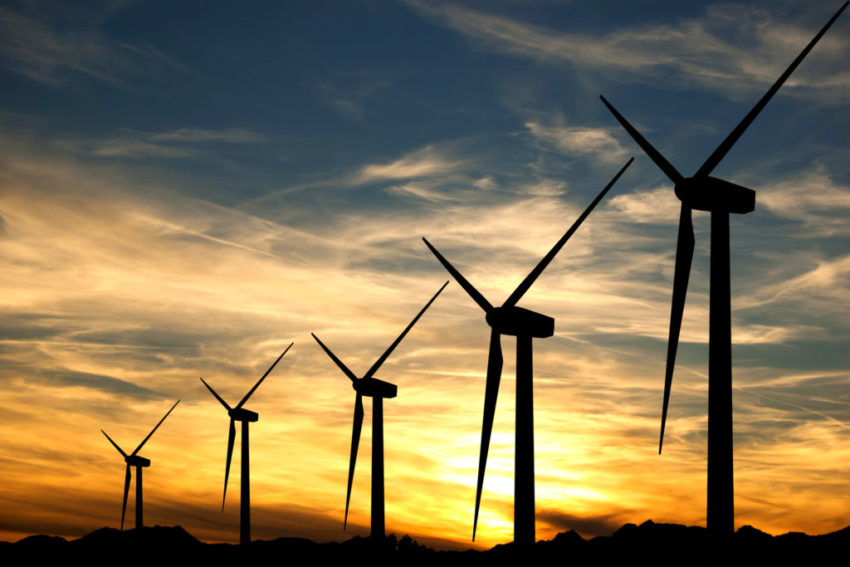Wind farms, or wind power stations, is a group of onshore or offshore wind turbines used to produce electricity.
They usually have less impact on the environment than other power stations, but they need to be built at a large scale in order to be effective.
Onshore wind farms
The ideal wind condition for wind farms is strong but consistent wind, with low turbulence wind blowing consistently from one single direction. Location is therefore critical to the success of an onshore wind farm.
Under these conditions, mountain passes are ideal locations. Higher altitudes are also good because the reduced influence or drag makes the wind blow faster. These locations can, however, be hard to reach.
Wind farms are also dependent on physical access, access to electric transmission, and prices on the local electricity market. Therefore, large scale wind farms are often placed in rural landscapes where the land in between can be used for agricultural or other purposes.
Offshore wind farms
Offshore wind turbines are less intrusive than turbines on land, as their prominent size and noise are reduced by distance. The average wind speed is usually considerably higher over open water than over land, due to the nature of the water surface. Therefore, offshore wind farms have considerably higher and more efficient energy production.
At the same time, installation and maintenance of offshore wind farms is a huge and costly challenge. The use of sensor technology, special service vehicles, and working platforms are required 24/7.
Benefits
Wind power is a renewable and emission-free energy resource, and as such a sustainable alternative to burning fossil fuels.
One of the greatest benefits of wind farms is that they have a relatively minor impact on the environment, especially compared to other power stations. Wind turbines consume no fuel and emit no air pollution.
The energy that goes into the manufacturing of wind turbines and transporting the materials used to build wind farms, is equal to the new energy produced by the wind generators within just a few months.
Critique
Onshore wind farms have been criticized for their visual and intrusive impact on the environment and landscape because they need to extend at a much larger scale than other energy production facilities. To power, an entire major city only by wind energy would require a station that is larger than the city itself.
Wind farms can also affect animal habitats negatively and have been reported to disturb radar, radio, and television reception.
Some people even report negative health effects due to the proximity of wind turbines, called wind turbine syndrome. However, this is not recognised by any international disease classification system.


